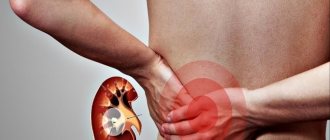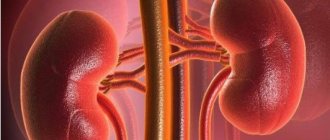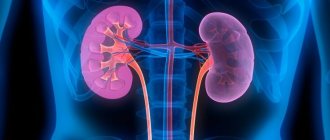- What is hemodialysis?
- Indications for hemodialysis
- Contraindications to hemodialysis
- How does hemodialysis work?
- Hemodialysis-related procedures
- Diet for hemodialysis
- Complications of hemodialysis
| Hemodialysis is a method of extrarenal blood purification, indispensable in some critical conditions, often becoming a regular procedure. Hemodialysis is often associated with the treatment of kidney dysfunction, and final recovery usually becomes possible only after transplantation. |
Briefly about the famous
Our kidneys have the most direct impact on the duration and quality of life. Therefore, a person is faced with kidney failure; he, in fact, begins to poison himself with metabolic waste products. In addition, any of us is susceptible to infection from external sources - for example, acetone vapor. This does not go unnoticed, especially when the kidneys fail.
Hemodialysis has been known for a long time. The technique itself is justified by the need to control the course of pathologies that are in one way or another associated with a sharp increase in the blood of breakdown products, as well as intermediate products. This occurs due to liver or kidney failure, the process of metastasis, poisoning with medicinal products, alcohol-containing substances, and poisons. In oncological practice, one often has to deal with the problem of intoxication due to tumor growth, which in turn triggers the process of increasing the concentration of pathological proteins, which can lead to the death of the patient.
At its core, the procedure is intended to remove harmful substances from the blood. First of all, it is used to treat people with kidney failure. The devices used in the procedure are capable of filtering urea, toxins, and excess fluid from the blood and helping to increase, sometimes significantly, the lives of patients. Medical statistics say: more than a thousand people per million people need to purify their blood.
Complications of hemodialysis
Hemodialysis is a procedure that patients have been forced to resort to for many years. It is not without a certain amount of complications, these include:
- imbalance syndrome - manifested by headache, nausea, muscle cramps, increased blood pressure and, ultimately, fainting;
- arterial hypotension - often develops due to excessive ultrafiltration during dialysis;
- pyrogenic reactions - for example, an increase in body temperature during a hemodialysis session is caused by bacterial contamination of the equipment and endotoxemia;
- air embolism - is a consequence of the entry of air into the system from different parts of the apparatus, as a result of which the clinical picture of embolism of the cerebral or pulmonary vessels develops;
- bleeding - nasal and gastrointestinal bleeding occur more often, hemorrhages in the brain, in the pericardial cavity and subdural hematomas are less common;
- perforation of the dialyzer membrane,
- the addition of a secondary infection - infection with the hepatitis B virus predominates in both patients (7-20%) and clinic staff, with anicteric forms accounting for 30%, and the HBS antigen is detected only in 40-50% of all cases of the disease; in addition to viral hepatitis, pneumonia often develops;
- aluminum intoxication - most often a consequence of its increased concentration in the water used to make dialysate; an increase in its concentration in the blood 1-2 years from the start of dialysis treatment, and sometimes earlier, leads to the so-called aluminum disease, manifested by osteopathy (joint pain, muscle weakness, risk of bone fractures) and encephalopathy (speech disorders, dementia, moderate hydrocephalus).
- acquired kidney cysts - especially often found in patients on program hemodialysis for more than 2 years, are localized in most cases in the cortex, often calcified, and in 3% of patients they are combined with malignant kidney tumors.
How to do it
So, hemodialysis is the purification of the blood from toxic substances and excess fluid, carried out using an “artificial kidney” apparatus. The principle of operation is simple. The membrane of the “artificial kidney” allows to “pump out” toxins from the blood of patients. They fall into a special solution, but proteins do not get there, again thanks to the membrane. Ultrafiltration of toxins and excess fluid then begins. It is clear that such manipulations must be carried out under highly sterile conditions. The “artificial kidney” is connected through a tube to the patient’s circulatory system. A special pump drives blood through the apparatus; Once cleansed, it is re-delivered to the patient. This procedure does not interfere with the patient: for five to six hours, while it is being performed, he can read or watch TV. The “artificial kidney” performs several functions at once:
- Normalizes electrolyte levels;
- Maintains acid-base balance;
- Removes metabolic products;
- Prevents the formation of blood clots;
- Removes excess water, etc.
Indications for hemodialysis
The quality of the patient’s blood requires the use of hemodialysis for the following pathologies:
- acute renal failure;
- chronic renal failure;
- severe disturbances in the electrolyte composition of the blood;
- overhydration, life-threatening (pulmonary edema, cerebral edema, etc.), not reduced by conservative therapy;
- poisoning with poisons and drugs (able to pass through the hemodialysis membrane);
- alcohol poisoning.
Treatment with program hemodialysis is indicated for the following clinical indicators:
- a decrease in glomerular filtration to 5 ml/min, which approximately corresponds to an increase in creatinine levels to 1.1-1.3 mmol/l (if clinical manifestations are severe, hemodialysis should be started as early as possible, already at a clearance of 10 ml/min);
- a drop in daily diuresis below 700 ml;
- the appearance of initial signs of uremic osteopathy, polyneuropathy, uncorrected hyperkalemia (7 mmol/l and above), hyperhydration, precomatous state, indomitable vomiting, unbearable itching, pericarditis, hemorrhagic diathesis.
Indications and contraindications
As already noted, hemodialysis is applicable for renal failure and for patients with other pathologies. Thanks to it, a person’s life can be saved and its quality improved. However, there are contraindications for use:
- Chronic hepatitis;
- Cirrhosis of the liver;
- Serious problems with the nervous system;
- Active tuberculosis;
- Problems with blood clotting;
- And also age 70+.
The procedure is well recommended for patients with significant tumor intoxication, as well as in preparation for chemotherapy.
Intravenous laser irradiation of blood
Diet for hemodialysis
Nutrition during hemodialysis plays a far from secondary role. Diet preparation should aim to minimize the accumulation of waste products in the blood, and therefore the following nuances are taken into account:
- the basis of the daily menu is a balanced amount of protein products, that is, chicken, meat and fish;
- It is necessary to carefully control the amount of potassium-containing products and not abuse them (the risk of heart complications increases) - these are salt substitutes, some fruits (bananas, oranges), vegetables (potatoes), chocolate, dried fruits and nuts;
- it is necessary to carefully monitor the amount of fluid consumed (the risk of edema, arterial hypertension, complications from the heart and lungs increases) - aim for an increase in body weight of no more than 5% between procedures;
- limit the amount of table salt, which causes thirst and retains fluid in the body;
- limit the consumption of phosphorus-rich foods if the doctor has prescribed medications to normalize the metabolism of calcium and phosphorus, which often happens - these are liver, heart, sea fish, egg yolks, nuts and seeds, bran;
It is strongly recommended that persons on hemodialysis not hide cases of dietary violations from their attending physician. No one is immune from these, but the doctor’s awareness of this will allow him to adjust the hemodialysis program in the most favorable way for the patient.
Kinds
Currently, several types of procedures are practiced in the world:
- At home;
- In an outpatient setting;
- In a hospital setting.
They all have their advantages and disadvantages. For example, home manipulation, practiced in Europe, is simple and safe and does not force the patient to wait in line at the clinic, but it is expensive and requires special training. In Russia, they practice carrying out the procedure in a hospital or outpatient setting.
Types of “Artificial kidney” devices differ in the structure of dialyzers:
- Lamellar;
- Capillary.
Both have proven themselves and have characteristic advantages.
Sources
- “Dialysis. Overview”, NHS, [https://www.nhs.uk/conditions/dialysis/](https://www.nhs.uk/conditions/dialysis/)
- Nephrology (clinical guidelines) edited by E.M. Shilova, A.V. Smirnova, N.L. Kozlovskaya, Moscow, “GEOTAR-Media”, 2016.
- Takeki Ishida, Kenichi Kono, Yuusuke Nishida, Masahiro Yoshida. Functional recovery in post-stroke patientson hemodialysis during the convalescent phase: a comparison with those notundergoing hemodialysis [Electronic resource] // Renal Replacement Therapy, 2021.
- Alexandre Lautrette, Christophe Leroy. Response to the letter to the Editor Regional citrate anticoagulation for intermittent hemodialysis in the intensive care [Electronic resource] // Annals of Intensive Care, 2021.
- Izaya Nakaya. Temporary central venous catheter at hemodialysis initiation and reasons for use: a cross-sectional study [Electronic resource] // Renal Replacement Therapy, 2021.
- Yuka Sugawara, Masao Iwagami, Kan Kikuchi. Infection prevention measures for patientsundergoing hemodialysis during theCOVID-19 pandemic in Japan: a nationwidequestionnaire survey [Electronic resource] // Renal Replacement Therapy, 2021.
Alternatives?
Today there are alternative methods of blood purification. In addition to the “artificial kidney”, other methods are also used, based on the principle of a membrane of limited permeability.
These are, for example, peritoneal dialysis and intestinal dialysis.
In the first case, the role of the filter is performed by the peritoneum, in the second - by the wall of the colon.
Both methods can be used if hemodialysis is contraindicated. Both are much cheaper, but they are also less effective. repeated laboratory diagnostics.
Forecast
With the timely initiation of adequate therapy, it will be possible to minimize damage to the kidney tissue, which will recover over time, as well as with changes in external factors, and the person will be able to live a full life without dialysis at all. For example, pregnant women after giving birth most often return to life without a filtration device.
Similar situations happen with babies who are born prematurely or with underdeveloped kidneys. The newborn is placed in a special box and connected to a dialysis machine. Within 4-8 weeks, as a rule, the kidneys complete their development, acquire the ability to function, and the child is transferred to the neonatology ward, where he is examined for the ability to exist without the help of equipment, after which he can go home to his parents.
The worst enemies of the body with diseased kidneys
And finally, about diet, I would like to especially focus on it. And not even so much on a diet, but on the fact that a person who has an apparatus or abdominal cavity instead of kidneys must constantly monitor the intake of table salt and liquid into his body. The diet itself is not so complicated, but it rejects the consumption of foods that force you to drink and then retain water (pickles, preserves, seasonings, chips, smoked meats, hot sauces, etc.).
The patient must know his own fluid intake and not exceed it (it is better to drink from small containers). In addition, you should exercise maximum caution with dishes containing hidden water (for example, oatmeal, fruits, vegetables), and do not forget that the tablets are also washed down with water (and it must be counted).
Fluid restriction
- one of the most difficult aspects of dialysis, some people do not so much suffer without bacon as they constantly think about water, so it turns out that the diet must be strictly followed. The accumulated excess water, if you ignore the recommendations, concentrates in the respiratory organs (lungs) and causes their swelling - a life-threatening condition develops. If the patient takes it lightly from the very beginning, hoping for dialysis, irreversible changes may occur that impair respiratory and cardiac activity.
What are the risks of dialysis?
Any method of blood purification can cause Side effects - Dialysis a feeling of fatigue and increased fatigue. This may have more to do with the kidney disease itself.
In addition, each dialysis method has specific complications. For hemodialysis, these are Side effects - Dialysis:
- Low blood pressure. This occurs due to a sharp decrease in the level of fluid in the vessels during the procedure.
- Blood poisoning, or sepsis. It develops when bacteria enter the blood.
- Muscle cramps. This complication also occurs due to fluid loss.
- Skin itching. It gets worse between dialysis treatments.
- Less common side effects. These are insomnia, joint pain, decreased libido, dry mouth and anxiety.
Peritoneal dialysis has fewer side effects - Dialysis complications. It can cause peritonitis, an infectious inflammation of the abdominal cavity. Also, people who undergo this procedure have an increased risk of developing an abdominal hernia.
Relative and absolute
Are there any contraindications for kidney transplantation? Can advanced age or chronic illness interfere with this operation?
Petr Semenovich, Ekaterinburg
– There are contraindications – both relative and absolute. Relative ones are age: performing a transplant on a person over 60 years old is a certain risk. True, there are 60-year-olds who look and feel like 40-year-olds. Everything here is at the discretion of the transplant surgeon.
Absolute contraindications include infectious diseases. For example, tuberculosis. If the patient is not cured, then on immunosuppressants this infection will definitely rear its head. Also – oncology. And so any patient without a kidney can get on the waiting list and be given a transplant.
True, there is another problem - donation. There are not enough organs for transplantation, as many legislative issues have not been resolved. Doctors are ready to do more transplants, but laws must be passed that would allow us to work more widely. In this we lag behind European countries and the USA.
Forever?
My sister suddenly developed kidney problems, she was prescribed hemodialysis, will she have to undergo this procedure for the rest of her life?
Maria, Moscow
Article on the topic
Tricks of hemodialysis. When to go for renal replacement therapy - Hemodialysis is prescribed when the kidneys are dead. Dialysis can be compared to a wheelchair: if a person has no legs, he sits on a wheelchair and moves only with its help. Dialysis is a life-saving renal replacement therapy.
But our patients are more susceptible to any other diseases. The incidence of cardiovascular diseases in them is tens of times higher than in healthy people. The incidence of pneumonia is significantly higher.
A much better solution in case of death of one’s own kidney is transplantation of a donor one.
Who gets dialysis?
Most often, the procedure is prescribed for chronic renal failure, which can develop for various reasons. Hemodialysis. Here they are:
- diabetes;
- arterial hypertension;
- glomerulonephritis, or immune inflammation of the kidneys;
- vasculitis - inflammation of blood vessels;
- polycystic kidney disease - the formation of a large number of cavities with fluid in them.
Sometimes dialysis is required Dialysis - hemodialysis for acute renal failure. This condition, Acute kidney failure, develops quickly, within two days. It may be associated with drug or drug poisoning, shock due to a burn, blood loss or sepsis, as well as blockage of the urinary tract with a stone or kidney blood vessels with blood clots.
The main criterion for Dialysis - hemodialysis, which the doctor focuses on when prescribing dialysis, is a decrease in kidney function to 10-15%. To determine this, a glomerular filtration rate test is performed. The study shows how small renal vessels allow various substances to pass through them.
Tyulyachinskaya central district hospital
Home Articles Hemodialysis, its features
The procedure for purifying the blood using an “artificial kidney” device, or hemodialysis, is one of the common methods of treating end-stage chronic renal failure. The head of the hemodialysis department of the Republican Clinical Hospital, surgeon, nephrologist of the first qualification category Nail Rafisovich Gatiyatullin spoke about the features of dialysis treatment.
— What does the diagnosis of “chronic renal failure” mean?
— Chronic renal failure, or, according to the modern classification, chronic kidney disease (CKD), is defined as kidney damage, the duration of which exceeds three months, and is characterized by morphological or functional abnormalities with or without a decrease in glomerular filtration rate (GFR). The causes of chronic renal failure can be various inflammatory diseases (chronic glomerulonephritis, pyelonephritis), impaired renal function in systemic autoimmune diseases (such as systemic lupus erythematosus, rheumatoid arthritis, etc.), renal tuberculosis, HIV nephritis, metabolic and endocrine diseases ( diabetes mellitus, amyloidosis, cystinosis), hereditary and congenital diseases (autosomal dominant adult polycystic kidney disease, Alport syndrome, reflux nephropathy, etc.), toxic and drug-induced nephropathies, obstructive nephropathies (nephrolithiasis, tumors of the urinary system, etc.), vascular disorders (atherosclerosis, arterial hypertension).
However, regardless of the cause, the essence of chronic renal failure is always a decrease in working kidney tissue, causing a disruption of the homeostasis of the entire internal environment of the body. The remaining nephrons work under increased load, which in turn also causes their changes and death. Changes in homeostasis include hyperhydration, hyperkalemia, hyperphosphatemia, hypermagnesemia, metabolic acidosis, azotemia, hyperuricemia and other disorders, the clinical manifestations of which are signs of poisoning of the body: aversion to food (mostly to meat products), nausea, vomiting, weakness, loss of strength , blood pressure over 180/100 mm Hg, bone pain, dry and yellow skin, swelling, shortness of breath, the smell of ammonia when breathing, and so on.
There are four stages of chronic renal failure. At the latent stage, the patient usually does not complain, and a biochemical blood test reveals minor disturbances in the electrolyte composition. The compensated stage is characterized by a decrease in glomerular filtration to 40-60 ml/min, the amount of daily urine output increases (up to 2.5 l), the patient complains of fatigue and increased blood pressure.
The intermittent stage is characterized by severe disturbances in kidney function, which is reflected in the results of tests revealing a persistent increase in the products of nitrogen metabolism in the blood - this is an increase in the level of urea and creatinine; glomerular filtration rate decreases to 15-40 ml/min. Patients experience general weakness, fatigue, thirst, dry mouth, and dry skin.
The final stage of chronic renal failure is the terminal stage, which is characterized by such symptoms as a decrease in the glomerular filtration rate to 15 or less ml/min, oliguria, overhydration, severe and difficult to control arterial hypertension, decreased appetite in the patient, nausea, vomiting, itching, pain in muscles and joints, and bad breath. At this stage, signs of dysfunction of internal organs and systems appear - gastrointestinal (uremic enterocolitis), nervous (symptoms of encephalopathy), endocrine, immune and others.
According to the modern classification of CKD (KDIGO, 2012), it includes five stages: stage 1 – GFR≥90 ml/min/1.73 m2; 2nd – 60-89 ml/min/1.73 m2; 3rd “a” stage – 45-59 (moderately reduced GFR) ml/min/1.73 m2; 3rd “b” – 30-44 (significantly reduced) ml/min/1.73 m2; 4th stage – 15-29 (sharply reduced) ml/min/1.73 m2 and 5th stage – less than 15 ml/min/1.73 m2 (end-stage renal failure).
— When is hemodialysis indicated for a patient?
— If we talk about indications, then first we need to distinguish between acute and chronic, or program, hemodialysis. Emergency, or urgent, hemodialysis is carried out in case of poisoning with poisons, drugs, alcohol, with severe swelling of tissues and organs, disturbances in the electrolyte balance of the blood (for example, with burns) to remove toxic substances and excess fluid from the body, prevent acute renal and liver failure, restoring electrolyte balance.
Chronic hemodialysis is more frequent, and the indication for it is end-stage renal failure. Most often, chronic renal failure develops against the background of chronic glomerulonephritis and diabetes mellitus, which affects a wide range of organs and tissues, including the kidneys. A common comorbidity is autosomal dominant polycystic kidney disease, a genetic progressive disease that also causes kidney failure. The indicator for making a diagnosis of end-stage renal failure (ESRD) is a decrease in glomerular filtration rate of less than 15 ml per minute.
— On what factors does the effectiveness of hemodialysis depend?
— First of all, you need to understand that hemodialysis only partially replaces renal function; it is not able to completely recreate the function of healthy kidneys. Using this procedure, the patient’s blood is cleansed of accumulated nitrogenous wastes, which, when accumulated in the body, cause negative changes in the well-being and condition of the patient’s body (dyspepsia, nervous and respiratory disorders, skin itching, etc.).
Secondly, with the help of hemodialysis, it is possible to remove excess fluid that accumulates in the body of patients with chronic renal failure due to food and fluid intake. Thirdly, hemodialysis corrects electrolyte changes that occur in the body of a person with abnormally functioning kidneys, for example, hyperkalemia (it is known that an excess of potassium can lead to cardiac arrest).
The effectiveness of hemodialysis is influenced not only by the quality of blood purification equipment (artificial kidney machine), but also by the presence of a special water treatment system. This is an important factor in the effectiveness of the procedure. The essence of water treatment is that a large system of column filters purifies tap water, making it virtually ultrapure, or deionized.
Other factors include the regularity and duration of hemodialysis sessions. The procedure is carried out in a specialized department of the clinic or in an outpatient center. The modern world standard for program hemodialysis is at least 12 hours a week, that is, four hours three times a week (in fact, the patient comes to our department “like going to work”). A one-time dialysis session lasting less than four hours is considered ineffective, as well as its regularity less than three times a week, because during the procedure the level of nitrogenous wastes in the blood decreases, fluid is removed, but then the patient goes home, lives a normal life, eats food , drinks, and this level begins to rebound again.
If you do not correct this “sinusoid” in time, you can provoke complications, and above all, an overload of the body with fluid, and this is already fraught with pulmonary edema, stress on the heart and its wear and tear, and so on. Today we use bicarbonate hemodialysis; we abandoned acetate hemodialysis long ago, since it worsens liver function and also has a pronounced hypotensive effect. There are no contraindications to bicarbonate dialysis; it is successfully used in Russia and around the world.
— Are there any contraindications to the hemodialysis procedure in general?
— There are such contraindications. For example, progressive chronic heart failure, in which the heart cannot cope with the increased load. In other words, a decrease in the global contractile function of the myocardium, when the ejection fraction is extremely low, and the formation of a permanent venous access (arteriovenous fistula) will cause the progression of existing chronic heart failure.
In addition, a contraindication is a severe oncological process with proven distant metastases, intoxication and a projected life expectancy of the patient of less than six months. In this case, hemodialysis would serve as a negative factor in the aggravation of the existing disease and a wider spread of metastases in the body.
An active form of tuberculosis of internal organs, severe hypotension, hemorrhagic stroke with progressive bleeding (and in general various types of bleeding, including internal) are also a contraindication to hemodialysis, since it involves taking anticoagulants that can increase bleeding.
And finally, the patient’s mental disorder, when he is dangerous to himself and others. Therefore, before prescribing this procedure, each patient undergoes a consultation with a dialysis doctor.
— Is there an alternative to hemodialysis?
— In total, there are three types of replacement treatment for chronic renal failure - hemodialysis, peritoneal dialysis and kidney transplantation, which are not an alternative to each other, since each method has its own indications and contraindications. Before a kidney transplant, for example, dialysis treatment is required to stabilize the patient's condition. In the acute period, with severe impairment of indicators, a kidney transplant cannot be performed.
Peritoneal dialysis, in which a dialysate solution is systematically (four times a day, daily) infused into the abdominal cavity through a special catheter. From the blood, nitrogenous wastes, excess fluid, and electrolytes are mixed into the solution according to the laws of physics, after which it is drained and the filling procedure is repeated. The role of a semi-permeable membrane, like a dialyzer in hemodialysis, in this case is performed by a special film that lines the inner surface of the abdominal cavity, namely the parietal peritoneum.
Peritoneal dialysis is a fairly young area; in our republic it has been developing since 2009, in Moscow and St. Petersburg - since 1995. Today, the global recommendation is to start dialysis treatment with peritoneal dialysis, when residual renal function is still preserved. This type of dialysis is performed on an outpatient basis and does not require the use of an “artificial kidney” apparatus and the use of anticoagulants, it preserves residual kidney function longer and better, it is applicable in children and the elderly, in case of hemodialysis intolerance or the patient’s unwillingness to be treated with this type of renal replacement therapy, as well as in cases when the possibilities of vascular access have been exhausted (we are talking about an arteriovenous fistula, with the help of which it is possible to connect the patient to the device).
At the moment, there are 13 patients on peritoneal dialysis in the hemodialysis department of the RCH in Kazan, one patient in the DRCH, and five patients in Naberezhnye Chelny. The treatment is successful, there are patients who have been on peritoneal dialysis for the sixth year already, and with good results. This area, with the support of the Ministry of Health of Tatarstan, is actively developing today. The need for dialysis treatment is consistently high: in the Republican Clinical Hospital alone, an average of 5-6 patients with ESRD who require dialysis are identified monthly.
In general, Tatarstan can be considered a quite prosperous region in this regard. Thus, we do not have a waiting list for dialysis treatment (there are 11 outpatient hemodialysis centers and two inpatient dialysis departments across the republic, accessible within 100 km of the patient), a good level of provision with modern equipment and consumables from the world's leading manufacturers.









